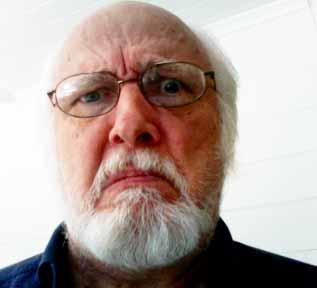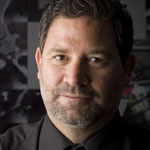Choragraphy composes/designs from a group point of view, and the function of Appiphany is to orient egents to their location in an energy milieu. The milieu is a phase space, a figure of which is found in Tarkovsky's Stalker (the Zone). Serres project to open a Northwest Passage to connect the different divisions of knowledge makes his work especially helpful for understanding manifestations of phase space in phenomena. Reminding us that complexity, topology, thermodynamics and the like, however abstract in their scientific principles, constitute descriptions of everyday reality. His texts are hybrids of literature, science, philosophy, in which he proposes numerous quotidian models and relays with which to study the principles. One such model is the jeu de l'oie (goose's game): "This game uses a board containing sixty-three squares arranged in a spiral configuration beginning from the outside and moving toward the center (hence the reference in Serres's text to a closed path circling back upon itself). A player throws two dice to advance a token along the squares. When a player lands on certain key squares, he is required to make special moves, for example, on the well square, the bridge square, the hotel square, the prison square, or the goose's square -- Ed." (Hermes, 40).
Serres proposed this children's board game as an emblem of the pattern he found in Zola's Rougon-Macquart cycle of novels. The pattern is generalizable as a map not just of narrative diegeses but as archetypes similar to the elementary catastrophes that inventory transformational potential in the lifeworld. The game model is a happy choice in our context because of its resonances with other sources guiding choragraphy: the archetypal locations (well, bridge, labyrinth...) evoke the naming formula of the elementary catastrophes of course, but also the system of chronotopes that Bakhtin found structuring various genres, one genre per locale (the point deserves a separate entry). The sixty-three squares correlate with the sixty-four hexagrams of the I Ching, an image metaphysics relay relevant to electracy, and the spiral path references the vortex of chora and thermodynamics. What interests Serres is the invariant path that insists in the pattern across a diverse archive of texts.
Let us go back to the game's vignettes or emblems: bridge, well, labyrinth, hotel, prison, and death. . . . The bridge is a path that connects two banks, or that makes a discontinuity continuous, or that crosses a fracture, or that patches a crack. The space of an itinerary is interrupted by a river; it is not a space of transport. Consequently, there is no longer one space; there are two without common boundaries. They are so different that they require a difficult, or dangerous, operator to connect their boundaries--difficult since at the very least a pontiff is necessary, dangerous since most of the time a devil of some sort stands watch or the enemies of Horatius Cocles stand ready to attack. Communication was interrupted; the bridge re-establishes it vertiginously. The well is a hole in space, a local tear in a spatial variety. It can disconnect a trajectory that passes through, and the traveler falls in, the fall of the vector, but it can also connect spatial varieties that might be piled upon one another: leaves, layers, geological formations. The bridge is paradoxical: it connects the disconnected. The well is more paradoxical still: it disconnects the connected, but it also connects the disconnected. The astronomer falls in (Thales); the truth comes out. The killer dragon lives there, but one draws the water of immortality from there. Mad aunt Dido throws the key into it, the key to the text, mind you, but the well (puits) contains all the seeds. And suddenly I am speaking with several voices; I can no longer draw the line between narrative, myth, and science. Is this bridge the Königsberg bridge where Euler invented topology, a bride over the Viorne or the Seine in the Rougon-Macquart cycle, or the whole group of bridges revealed in mythical discourse? No, I no longer have the choice, and it is the same bridge. Is this well a hole in Riemannian spatial varieties, a well of potentiality in which, at its lowest ebb, appears the germinating point, as inThom, or the Plassans well, or Jacob's? No, I no longer have this choice, and it is the same well. In every case, and so much the worse for classification, connection and non-connection are at stake, space is at stake, an itinerary is at stake. And thus the essential thing is no longer this particular figure, this particular symbol, or this particular artifact; the formal invariant is something like a transport, a wandering, a journey across separated spatial varieties. Circumnavigation of Ulysses or of Gilgamesh and topology (Serres, Hermes, 42-3).
References to the well resonate with Murphy's Well-Being, such that wellness, well-being, fall within this same itinerary. The lesson for choragraphy is to generalize to the heuretics of Serres's insight: to inventory the assemblage of materials in Serres's collection, and test the account in a Konsult.
See Michel Serres, Hermes: Literature, Science, Philosophy, Ed. Josué Harari and David F. Bell, Johns Hopkins, 1982
*An example of the Goose's Game.



